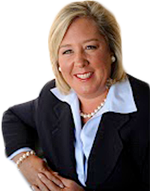Seawright Introduces Bill to Expand Coverage for Breast Cancer Screening
Current state law was enacted in 1989 and limits required mammography coverage to first-degree family members (mother-daughter); Mannion and Seawright bill expands coverage to second-degree family members (grandmother-granddaughter, aunt-niece)
Legislation aligns with medical recommendations to increase screening for women at higher risk to promote early detection and better outcomes
Albany, NY – Assemblymember Rebecca Seawright and Senator John W. Mannion today announced legislation (S7785/A8387) that expands coverage for breast cancer screening and bolsters early detection for women in New York State at higher risk from their family medical history.
Current state law was enacted in 1989 and includes age and other limits such as having a first-degree family member with breast cancer for what’s required for mammography insurance coverage. Mannion and Seawright’s bill expands insurance coverage in New York to women with second-degree family members (grandmother-granddaughter, aunt- niece) that have had breast cancer.
Assemblymember Rebecca Seawright said, “I am proud to be Lead Sponsor in the Assembly on legislation to expand eligibility for breast cancer screening to more New Yorkers with family history of breast cancer. Over 15,000 women across NY will be diagnosed with this terrible disease this year. It is the most-commonly diagnosed cancer in women. Early detection is key. This bill will increase access to screenings, early diagnosis and treatment to save lives.”
Senator John W. Mannion said, “Early detection is the key to beating breast cancer and we know that unfortunately, this is a disease that runs in families. This bill updates laws that were passed over thirty years ago to reflect modern science and our current understanding of breast cancer treatment. All women, particularly those at high risk, should have insurance coverage for these vital and potentially life-saving screenings.”
The legislation aligns with medical recommendations to increase screening for women at higher risk to promote early detection and better outcomes.
